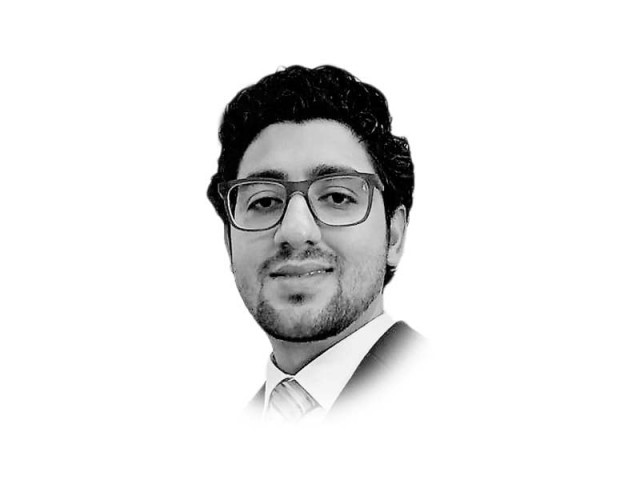Relationship between development and inequality
From a moral and ethical standpoint, inequality is an issue of concern for almost everyone on the political spectrum

The writer is a special assistant to the federal minister of planning, development and reform on sustainable development
But the Great Recession of 2008 was a major setback for neoclassical economic thinking. It created room for more heterodox economic ideas to get back into the limelight. Especially since the publication of Thomas Piketty’s Capital in the 21st Century’, the political economy of distribution has gained a lot more traction among academia, policy circles, politicians and media.
The highly skewed distribution of income perpetuates socio-economic inequities. From a moral and ethical standpoint, inequality is an obvious issue of concern for almost everyone on the political spectrum. But how does socio-economic inequalities impact processes of economic development requires careful analysis.
Economists have historically struggled to conceptualise the relationship between income inequality and economic growth. Early development economists envisioned rising income inequality an unavoidable outcome of the processes of development. The most famous account of this relationship was presented by an American economist, Simon Kuznets, in the 1950s. He argued that the inverted U-shaped curve best explains the relationship between inequality and economic development (per capita income).
According to Kuznets, at an early stage of development, income inequality would rise as the size of economy grows. This rise in inequality is explained due to structural changes in economy, ie, share of industry increases and agriculture decreases, both in terms of Gross Domestic Product (GDP) and employment. This is explained on the premise that there is relatively less inequality in agrarian economy (rural spaces) vis-à-vis industrial economy (urban spaces). Therefore, when people move from rural to urban spaces, at aggregate level the country experiences a rise in inequality and this process continues until a state of equilibrium is achieved. Moreover, differences of income in agriculture and industry also contribute towards rising inequality. But once an economy fully industrialises, inequality would reduce because sectoral differences would diminish.
Moreover, it is argued that political consciousness of people in urban spaces would increase with education and inclusive institutions would be built with time. As a result, social safety nets and progressive taxation regimes would promote more egalitarian distribution of income.
Inspired by Kuznets’ hypothesis, policymakers in many developing countries remained indifferent to rising inequality on the assumption that inequality would eventually decline by the organic processes of development. There is a plethora of studies which show that there is no empirical evidence in support of Kuznets’ theory. On the contrary, empirical evidence suggests that relationship between growth and inequality is much more complex.
In some countries inequality is worsened with the rise in per capita income whereas in other countries inequality has reduced with the rise in per capita income. In other words, it can be inferred that policy regimes determine the direction in which inequality would go as a country undergoes economic development.
Political economist Joan Robinson famously noted: “The purpose of studying economics is not to acquire a set of ready-made answers to economic questions, but to learn how to avoid being deceived by economists”.
Millions of people around the world were adversely effected by the austerity policies which were championed by some economists. Thousands of low income and working people in Pakistan were also at the receiving end of defunct economic theories in the past. For example, in 1960s policymakers in Pakistan opted for the doctrine of ‘functional inequality’ which was considered gospel at the time. The argument was that higher inequality leads to faster growth due to structural and incentive mechanisms. Structural mechanisms refer to a shift from low productivity sector (agriculture) to high productivity sector (industry) of the economy. General Ayub Khan’s government incentivised industrialists to acquire higher rates of profit on their investments. The share of profits in total income improved substantially vis-à-vis share of wages; consequently, a massive level of income inequalities emerged. Society became highly polarised. But the real irony was that it was justified by many economists of the time.
Now moving fast forward, in a marked departure from the days of functional inequality, the Planning Commission acknowledges today that inclusive and indigenous economic growth is the only way forward. It is noted in Pakistan Vision 2025 that the well-being of human beings is the ultimate goal of economic development and economic growth only serves as a means to achieve that end.
At the global level, it is estimated that 40 per cent of the total global income is earned by the richest 10 per cent. On the other hand, only 2 to 7 per cent of the total global income is earned by the poorest 10 per cent. If we only look at the countries of the global south, at an aggregate level, income inequality increased by 11pc since 1990. The rising inequality can fuel social, economic and political conflicts. That is why inequality has made it to the UN Sustainable Development Goals (SDGs) list alongside poverty.
Finally it seems there is some consensus that the rising level of income inequality must be avoided. The next question is how to minimise income inequality. Piketty suggests a progressive taxation regime as a policy instrument to minimise inequality and promote inclusive growth. Redistribution of income and/or wealth implies that some would ‘gain’ and others would ‘lose’. Therefore, it is obvious to expect resistance to such policy measures from those who are bound to lose in the short run. This takes us back to the tradition of classical political economy — the relative bargaining power of classes/groups determines the distribution of income in an economy.
Published in The Express Tribune, July 8th, 2017.
Like Opinion & Editorial on Facebook, follow @ETOpEd on Twitter to receive all updates on all our daily pieces.















COMMENTS
Comments are moderated and generally will be posted if they are on-topic and not abusive.
For more information, please see our Comments FAQ